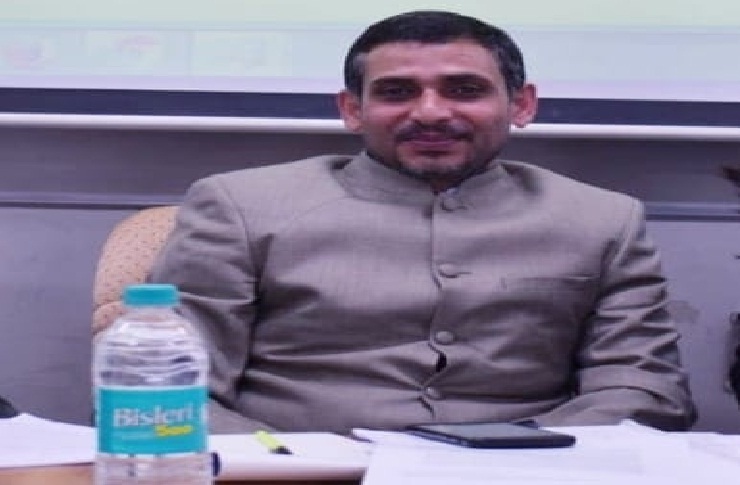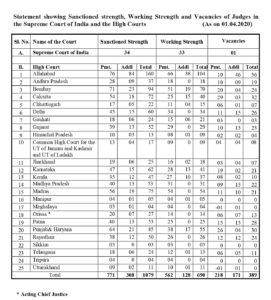Over 389 Vacancies of Judges in 25 High Courts in the country as on April 01, 2020.
A SMALL PIECE OF INFORMATION
In our Country, we have huge pendency of cases in lower courts as well as in the High Courts.
Centre Government and the Higher Judiciary are not serious on Appointment of Judges in Different High Courts of the Country; with each blaming the other for the over 389 vacancies of Judges across High Courts in the country that together have a sanctioned strength of 1,079.
Today I have seen updated list of Vacancies of Judges in the Different High Courts on Department of Justice, Ministry of Law & Justice Website and thought that i have to write down something on this topic
According to my opinion, there are so many causes for extraordinary Delay in Filling up the Vacancies of Judges in the Supreme Court and High Courts………………..
1. Role of Executive in Appointments of Judges is the major cause : Judicial appointments is the joint responsibility of the Judiciary and Executive, with neither body having primacy over the other.
2. Memorandum of Procedure (MoP) Finalisation: The lack of consensus between the Judiciary and Executive, in relation to finalisation of the Memorandum of Procedure (MoP) has led to delays in filling up vacancies in the different High Courts of the country.
3. Timelines in filling vacancies of Judges: The timelines laid down in the Second Judges case and the MoP are not being adhered to, by the Executive and Judiciary.
4. Decline the collegium’s recommendations on the Ground of “National Security and Public Interest”: The government proposes to decline the collegium’s recommendations for appointment on grounds of ‘national security’ and ‘larger public interest’.
If the Executive/Government reject a candidate name on these grounds, it would be similar to giving them a veto power, which is against the constitutional mandate. The terms ‘national security’ and ‘larger public interest’, and the circumstances that would fall within their purview should be specified.
Suggestions:
-
Increase the age of Retirement of Judges: The retirement age of SC judges may be increased to 67 years, and HC judges to 65 years. This is based in line with international practice.
-
Transparency in Appointments of Judges: Greater transparency in the process of appointment of judges of higher courts must be ensured.
-
Timelines for appointments of Judges should be specified in the Memorandum of Procedure (MoP) and adhered to by all constitutional authorities.
-
A cell in the Registry of the courts could maintain a computerized database of persons eligible for appointment as judges
-
Minimum Tenure: Most Chief Justices of high courts have short tenures, for about a year or so. The Department of Justice may create a fixed minimum tenure for Chief Justices of high courts and for Chief Justice of India Also.
-
Ad hoc judges Apponitments: Chief Justices of High Courts may appoint retired judicial officers as ad hoc judges, to deal with the increase in pending cases. Such appointmentsshould be in addition to the sanctioned strength of the court.
See the List of Vacancies Official on Department of Justice, Ministry of Law & Justice Website, Click Here
Thanks for reading this
Dr. Dharmender Patial
Facebook Comments
 1744
1744



289 comments
Comments are closed.